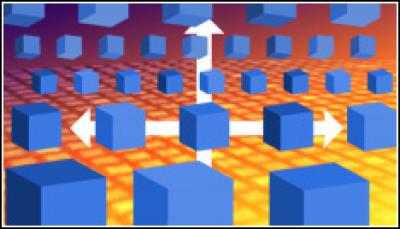CERN Breaks Record Despite Glitches

CERN scientists are calling the successful collision of proton particle beams at 7 TeV in the Large Hadron Collider (LHC) “historic”
Despite a delay in the scheduled start of high-speed proton collisions in the Large Hadron Collider—a particle accelerator operated by the European Organization for Nuclear Research (CERN)—due to technical glitches, just after 1 p.m. Central European Time (CET), the LHC set a world record, colliding proton particle beams at 7 TeV for the first time in history.
On a live Webcast documenting the event, CERN scientists described the successful collisions as “beautiful,” “fantastic” and “historic.” At approximately 12:30 p.m. CET, CERN’s Twitter account announced the beams had accelerated up to 3.5 TeV and operators were preparing to collide the beams. About half an hour later, it was announced that for the first time in history, scientists collided two beams traveling at that speed, setting a world record (though the Twitter feed acknowledged nature does this all the time with cosmic rays and other high energy). The achievement is a major accomplishment for the LHC and CERN, which have both seen numerous setbacks on the road to eventual success.
A live Webcast of the event showed CERN scientists in the ATLAS control room erupting into cheers and applause as the first successful collision occurred. The beams were later successfully stabilized, drawing more applause, cheers and smiling faces.
During the energy ramp-up to circulate beams at 7 TeV (3.5 TeV per beam), the beams were lost due to the machine’s protection system. Andrzej Siemko, who supervises the machine’s quench protection system, theorized an electric perturbation, seen also by other accelerators, made the protection system stop the magnets. CERN reported the machine was in the process of restarting.
According to a later tweet by CERN, new analysis showed that the magnetic coupling of the main circuits in the Super Proton Synchrotron (SPS), used to accelerate protons and antiprotons, electrons and positrons for use as the injector for the LHC, caused the problem and not an electric perturbation. A second attempt an hour later was unsuccessful, prompting scientists to “dump it” and try for a new injection. “Major discoveries will happen only when we are able to collect billions of events and identify among them the very rare events that could present a new state of matter or new particles,” CERN spokesman Guido Tonelli told BBC News. “This is not going to happen tomorrow. It will require months and years of patient work.”
Once 7 TeV (1 TeV equals a million million electronvolts) collisions have been established, the plan is to run the machine continuously for a period of 18to 24 months, with a short technical stop at the end of 2010. CERN said this would bring enough data across all the potential discovery areas, including basic laws governing the interactions and forces among the elementary objects, the deep structure of space and time, and especially regarding the intersection of quantum mechanics and general relativity.
“We’re all emotional, and all very happy. This is our first important milestone, and it’s taken us three attempts this morning, as you probably noticed,” CERN’s director for accelerators and technology, Steve Myers, said during the live Webcast. Over the 2009 part of the run, each of the LHC’s four major experiments—ALICE, ATLAS, CMS and LHCb—recorded over 1 million particle collisions. Collisions at 7 TeV mark the start of the physics program of the LHC; at those energies scientists will be able to cross-check data and predictions from previous experiments and potentially discover predicted or unpredicted particles that will help scientists understand how the universe works.